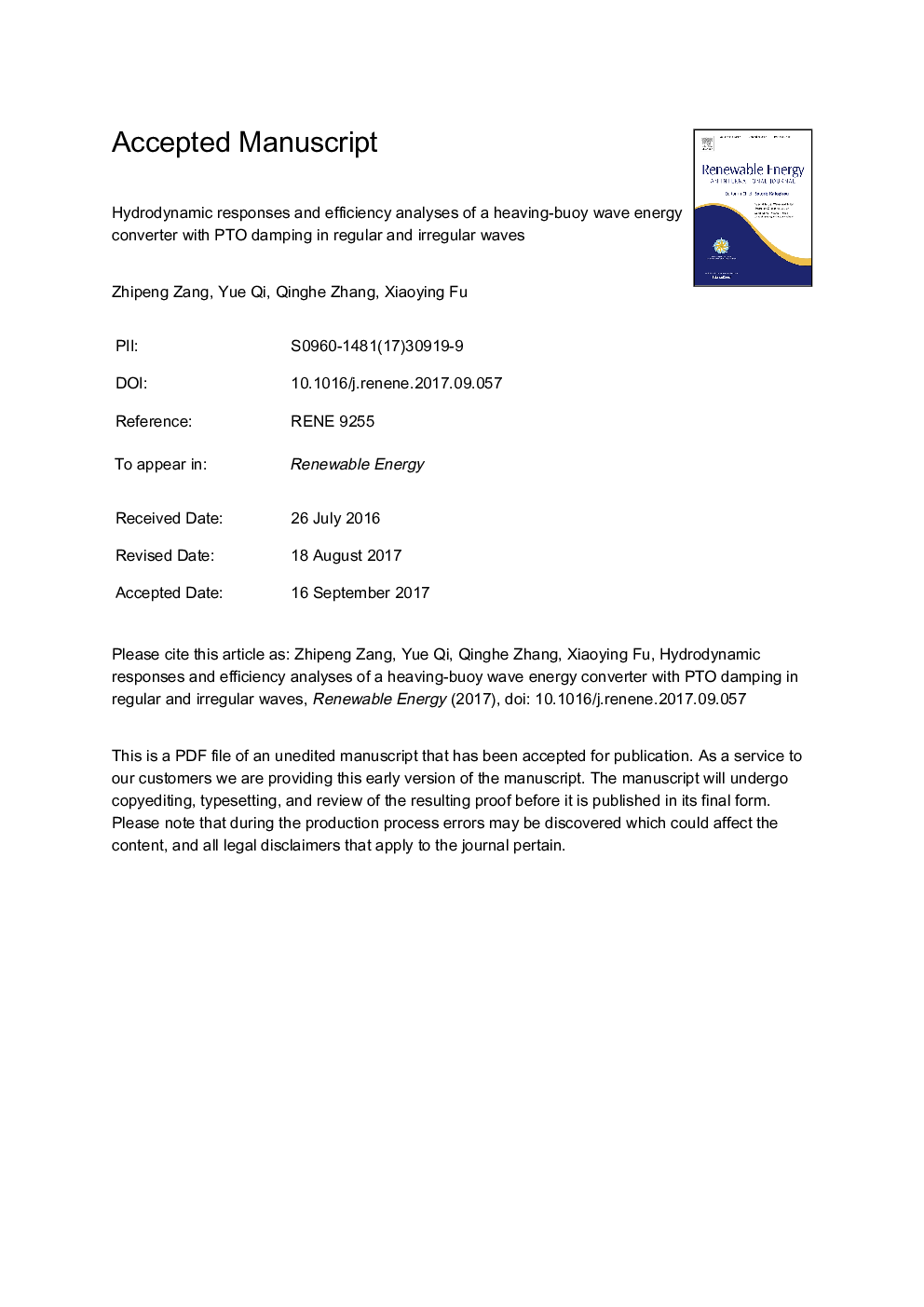| کد مقاله | کد نشریه | سال انتشار | مقاله انگلیسی | نسخه تمام متن |
|---|---|---|---|---|
| 4925920 | 1431589 | 2018 | 52 صفحه PDF | دانلود رایگان |
عنوان انگلیسی مقاله ISI
Hydrodynamic responses and efficiency analyses of a heaving-buoy wave energy converter with PTO damping in regular and irregular waves
دانلود مقاله + سفارش ترجمه
دانلود مقاله ISI انگلیسی
رایگان برای ایرانیان
کلمات کلیدی
موضوعات مرتبط
مهندسی و علوم پایه
مهندسی انرژی
انرژی های تجدید پذیر، توسعه پایدار و محیط زیست
پیش نمایش صفحه اول مقاله

چکیده انگلیسی
Experimental investigation on the power performance of a heaving-buoy wave energy converter (WEC) with power take-off (PTO) damping was conducted under regular and irregular waves. The effects of the main influential parameters, including the incident wave height, wave frequency and PTO damping, on the maximum heave displacement, phase difference between the buoy velocity and wave elevation, and capture width ratio were quantitatively studied. For regular waves, with decreasing incident wave height or increasing PTO damping, the nonlinearity between the heave motion and surrounding wave elevation became pronounced and three modes of the buoy, i.e., linear motion, non-linear motion and non-motion, can be found. Based on analyses of the capture width ratio in both regular and irregular waves, the present WEC can obtain an optimal power efficiency at frequency ratio of Ï/Ïn â 0.8 and PTO damping ratio of ζp â 0.5. It has been examined that H1/10 can generally provide better approximation of the incident wave energy than H1/3 and HAVG for irregular waves based on the linear wave theory. The statistical power performance of the WEC in irregular waves generally has the same trend as that in regular waves. The capture width ratio in irregular waves is found to be (approximately 5-40%) higher than that in regular waves for the same wave parameters, though the absolute incident and absorbed wave power in irregular waves are only half of those in regular waves. Finally, the flow structures around the heaving buoy are analyzed. The formation of vortices around the bottom corner provides flow interpretation on the viscous loss of wave energy for a heaving-buoy WEC with a flat bottom.
ناشر
Database: Elsevier - ScienceDirect (ساینس دایرکت)
Journal: Renewable Energy - Volume 116, Part A, February 2018, Pages 527-542
Journal: Renewable Energy - Volume 116, Part A, February 2018, Pages 527-542
نویسندگان
Zhipeng Zang, Qinghe Zhang, Yue Qi, Xiaoying Fu,